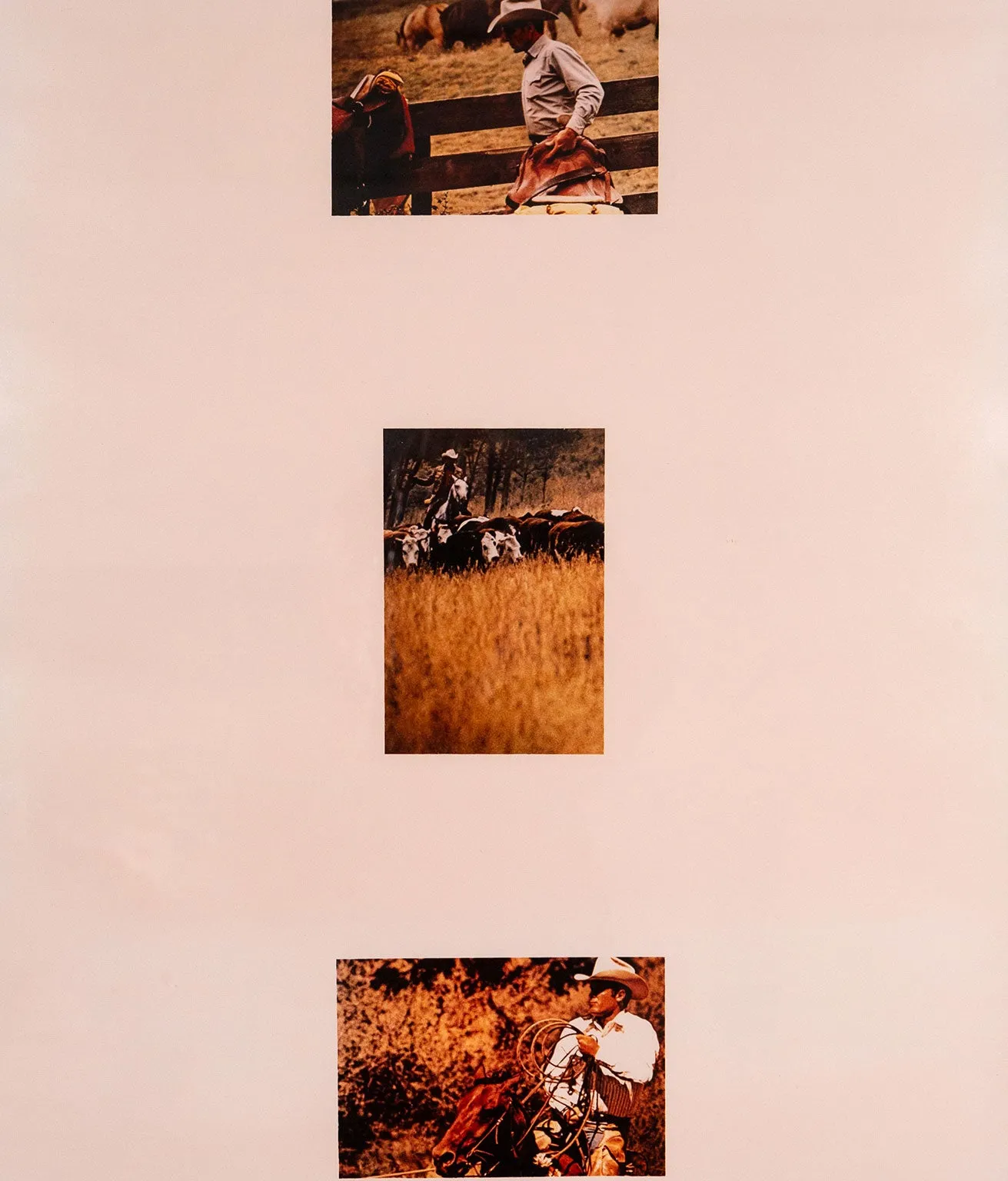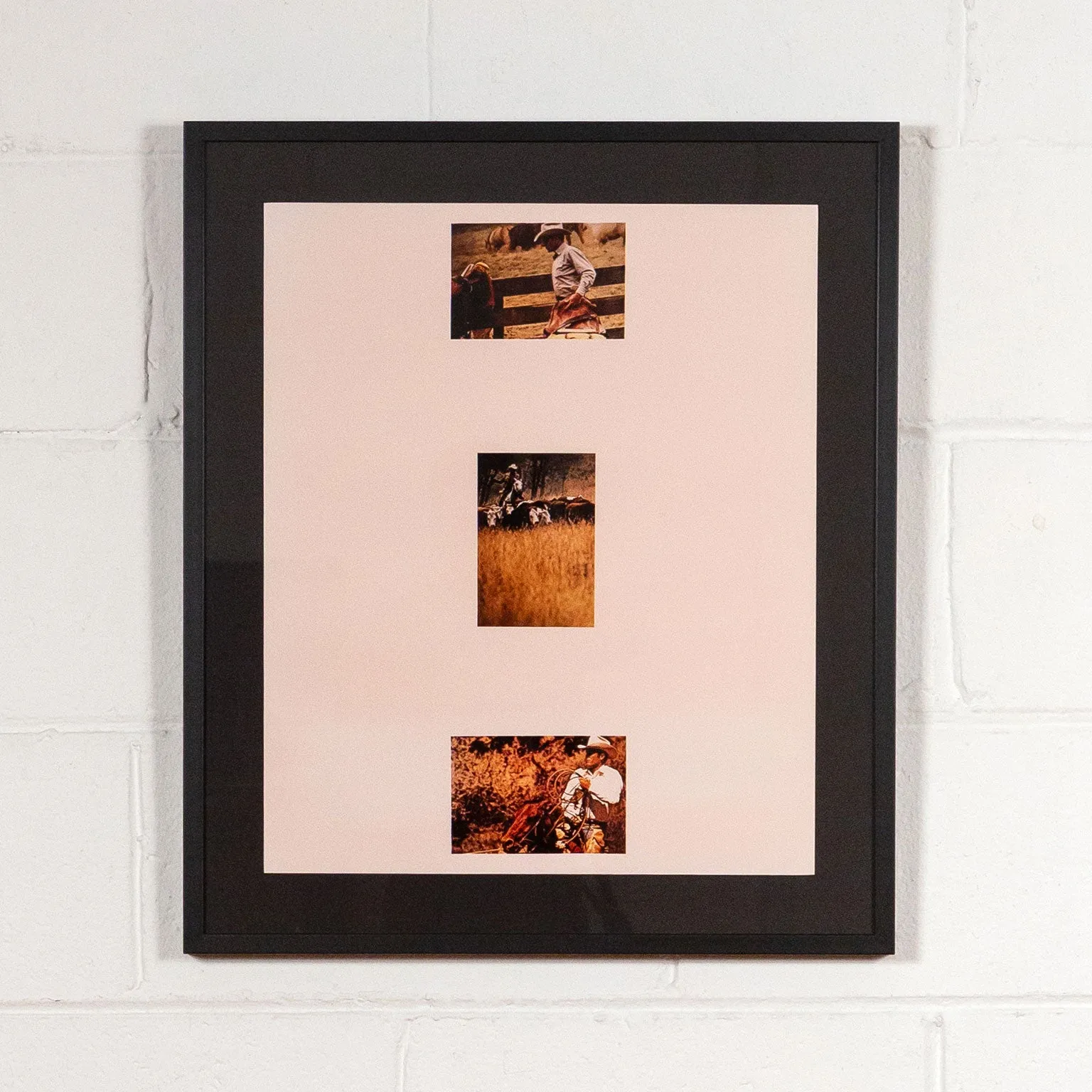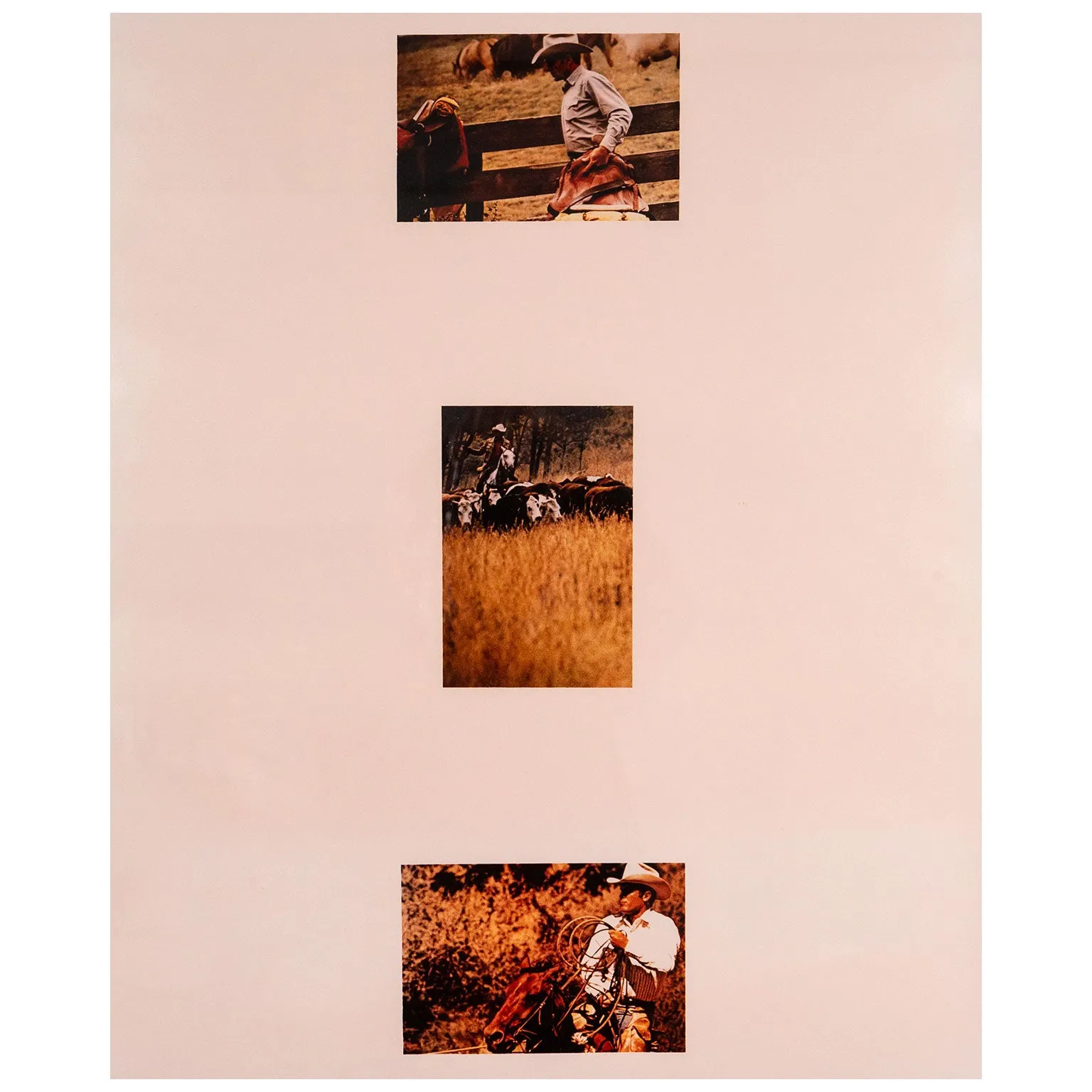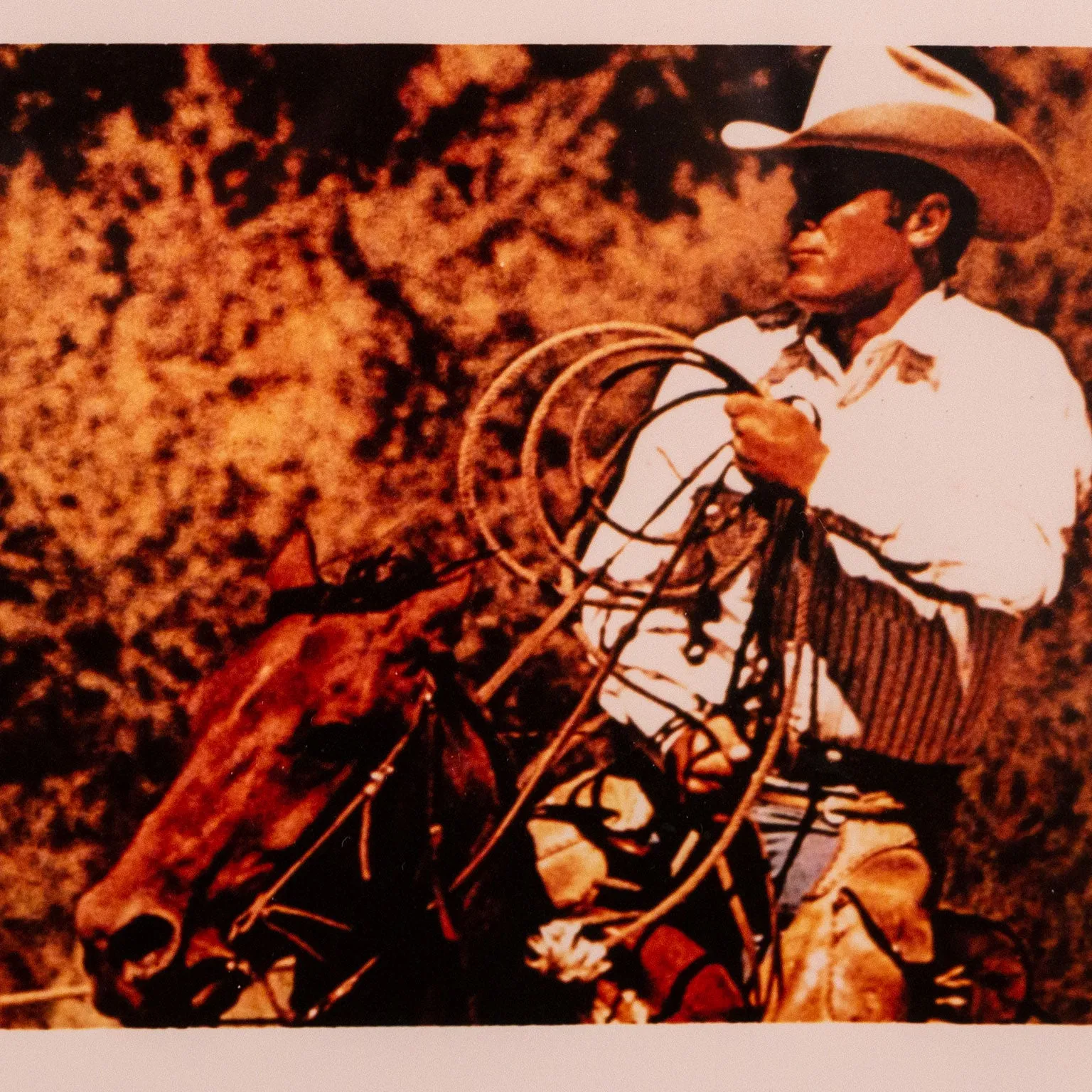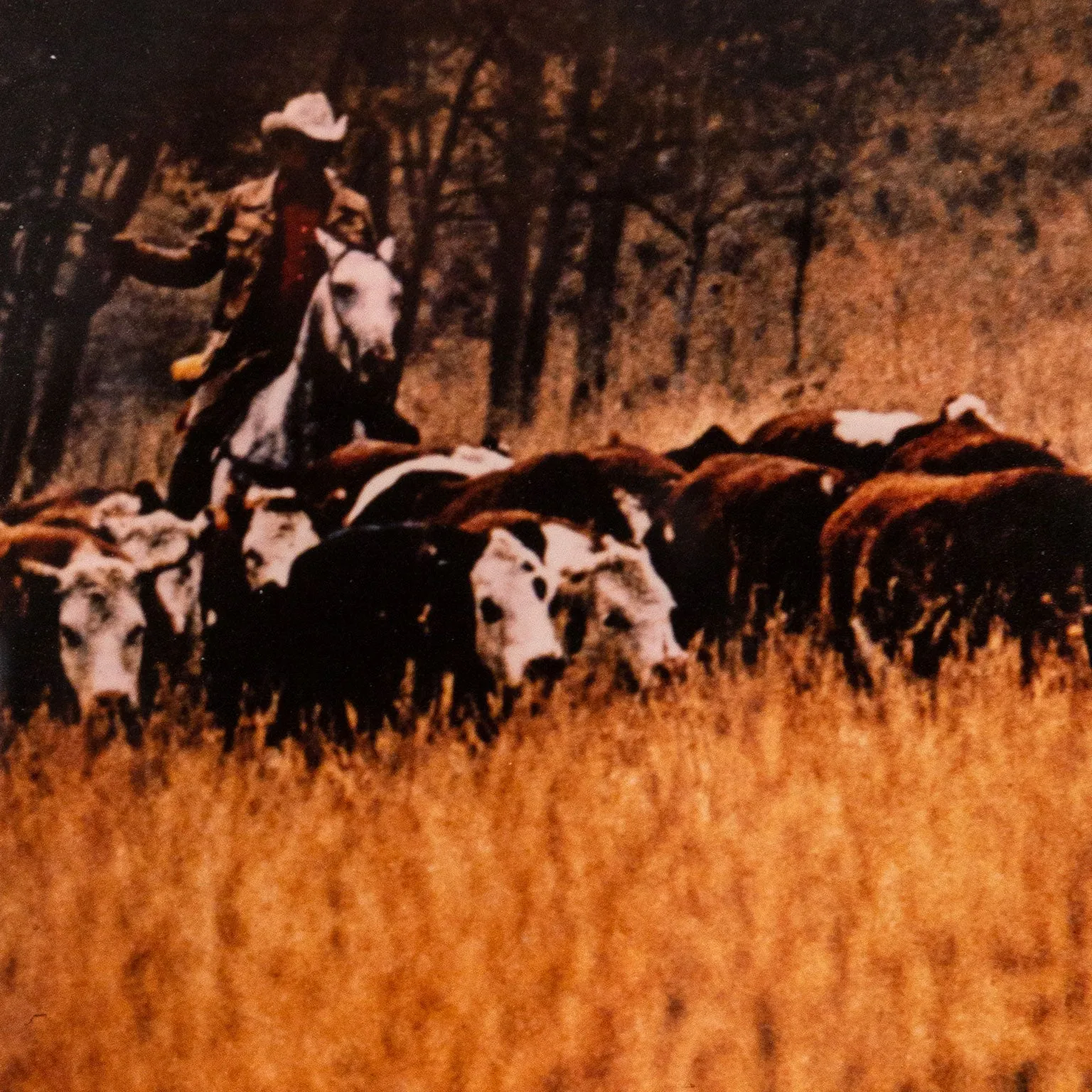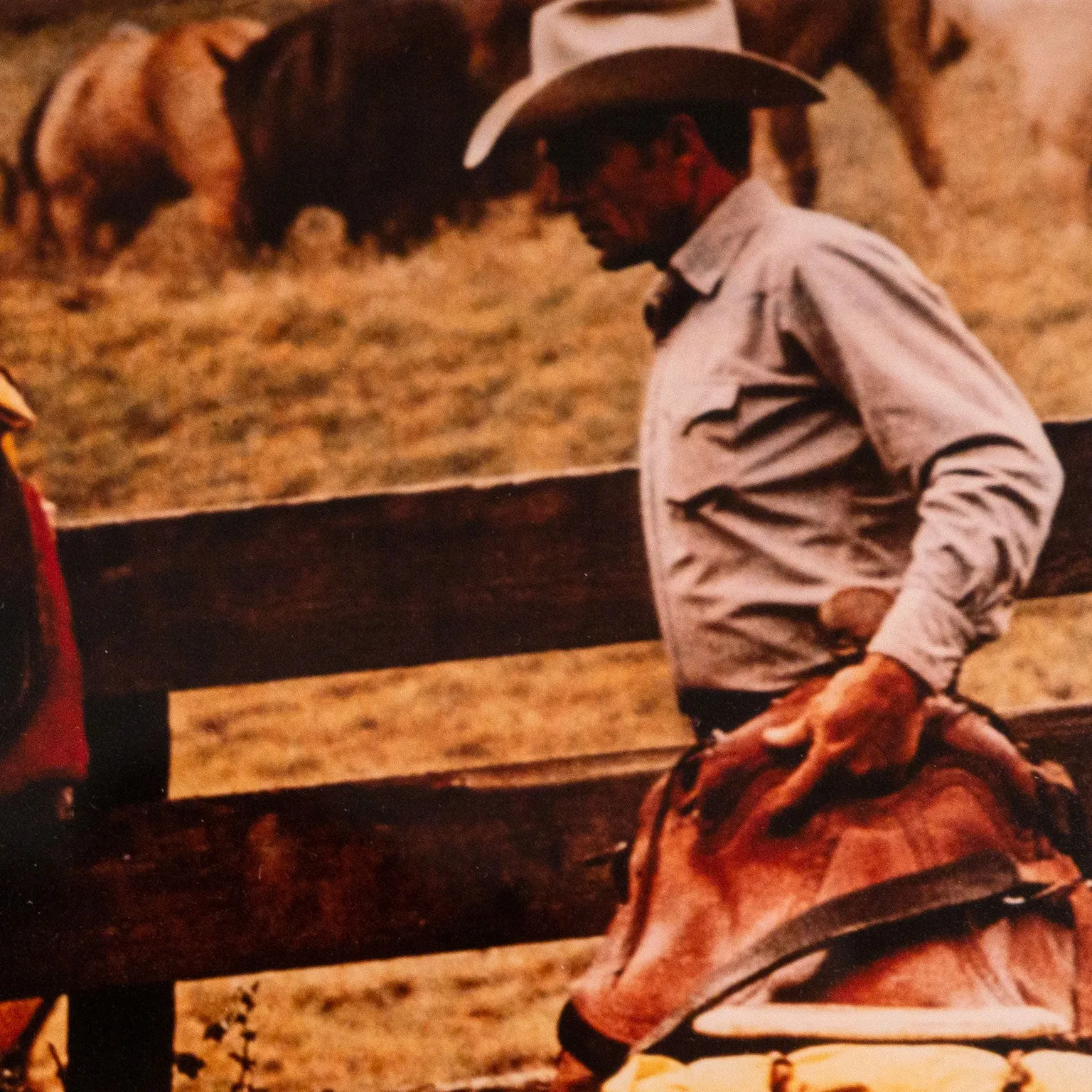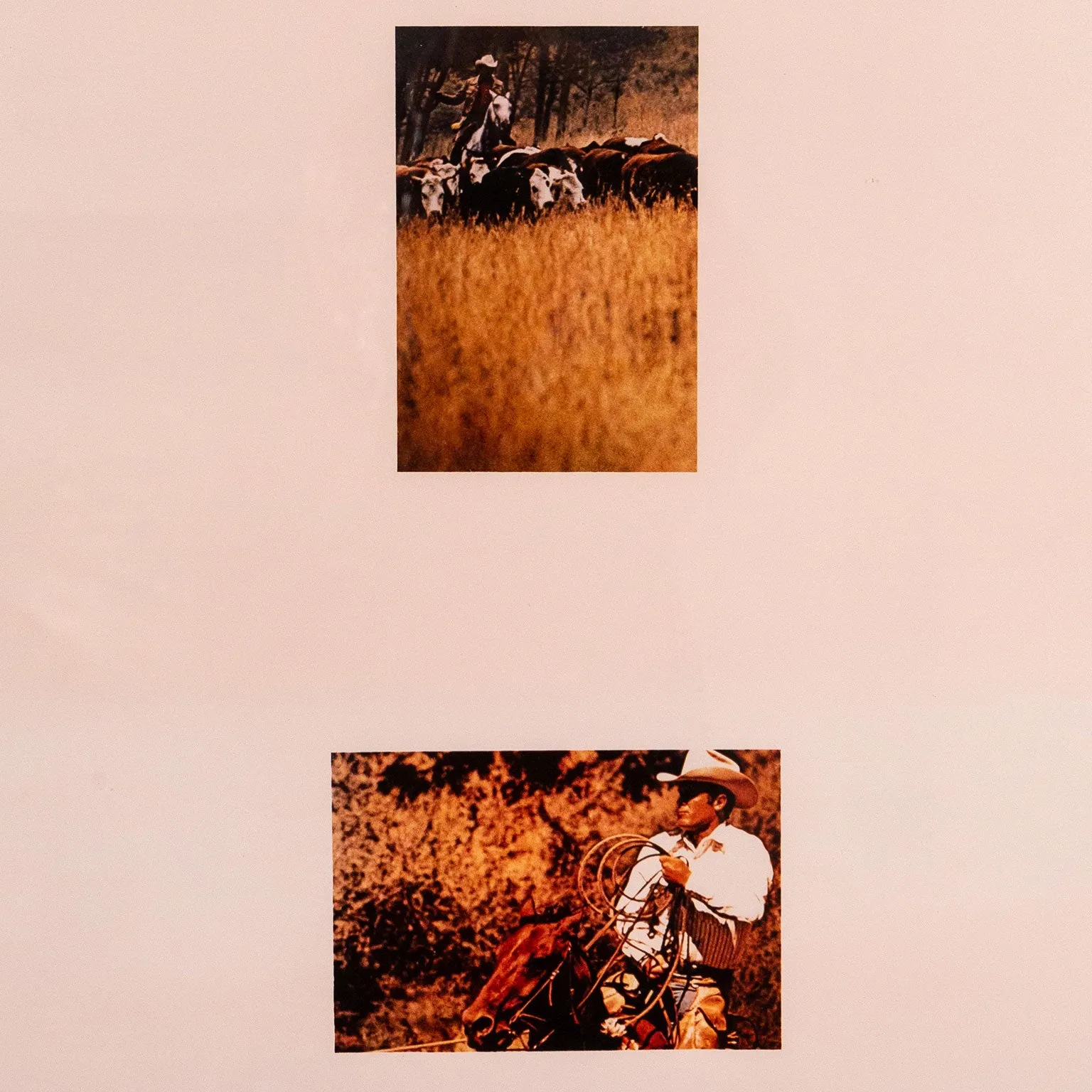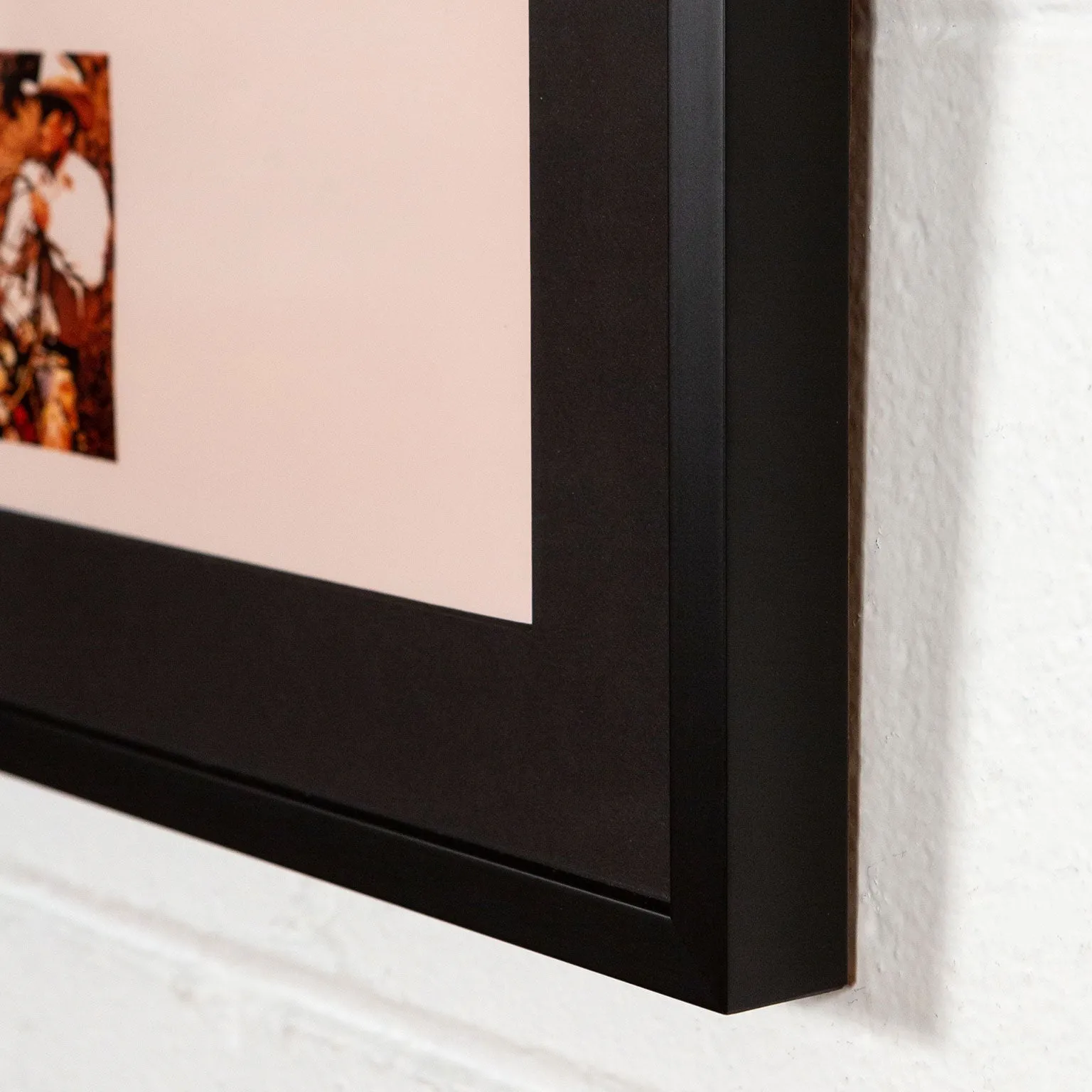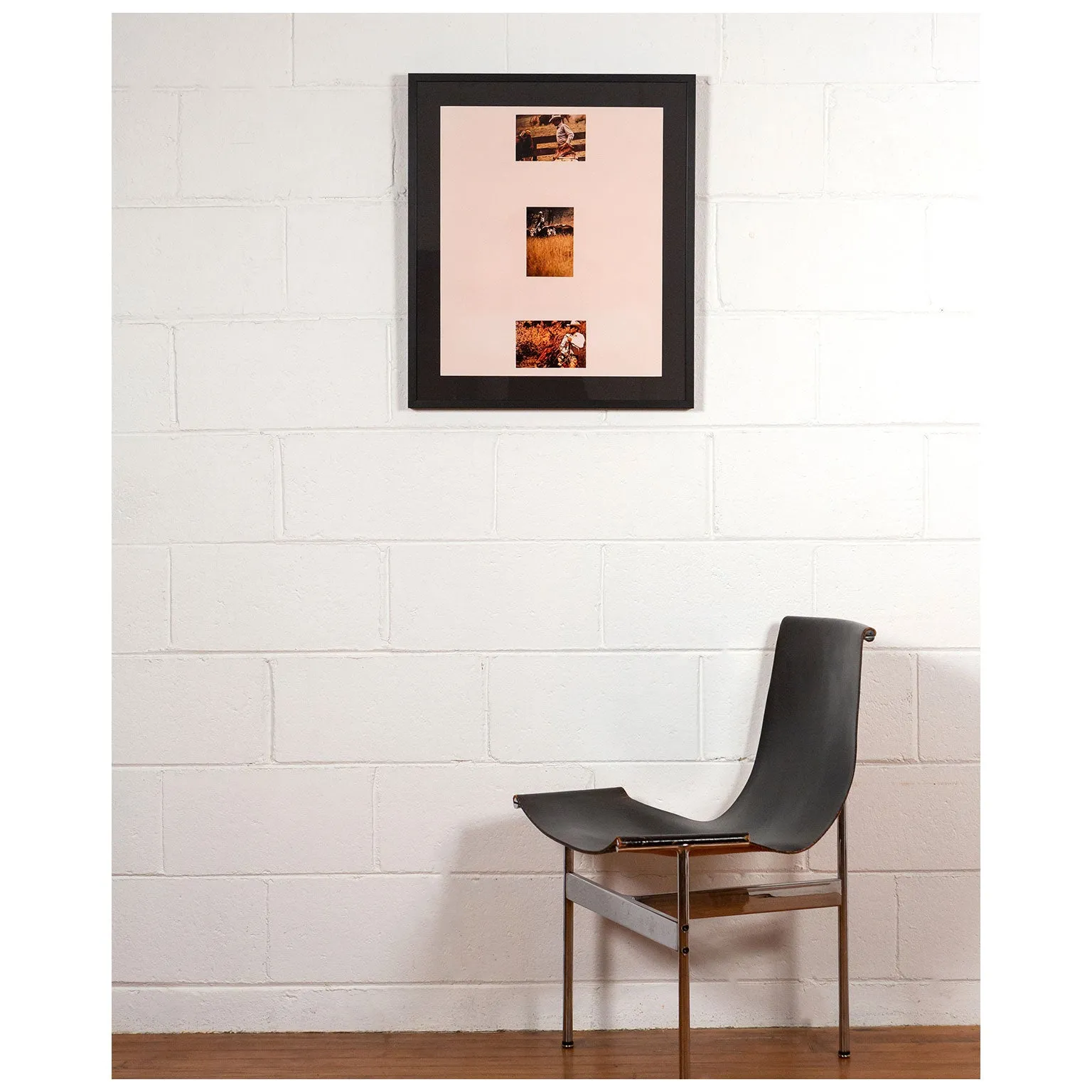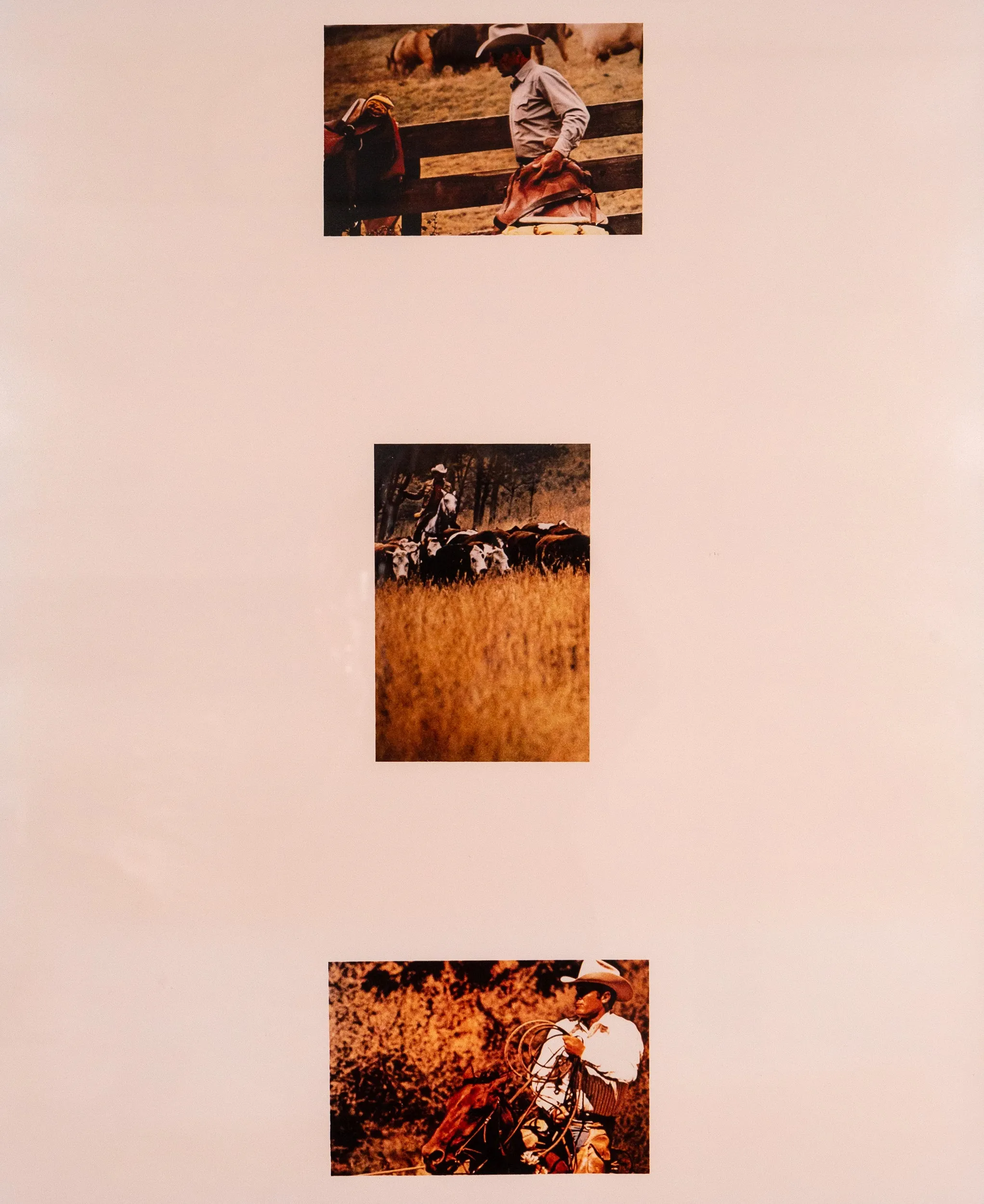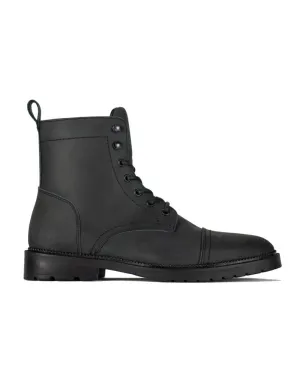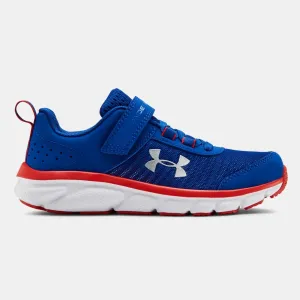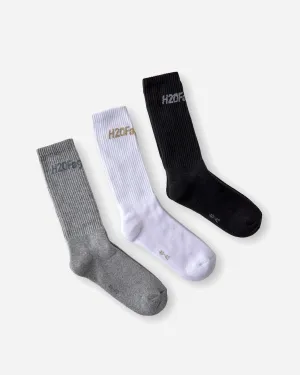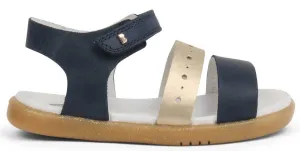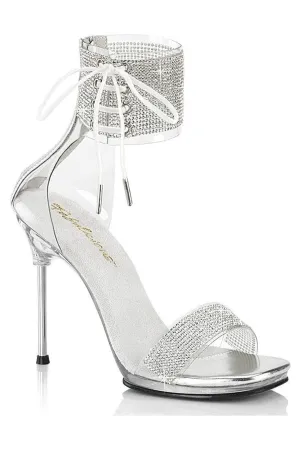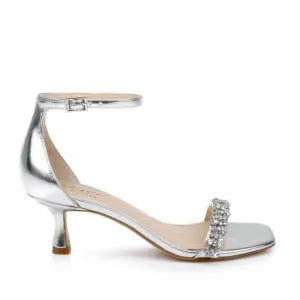Richard Prince (b. 1949) is one of the most innovative, influential and polemic American artists. Whether you associate him with The Pictures Generation, post-modernism or appropriation art, his contribution is undeniable.
Prince has worked in a variety of formats over the course of his career, yet each of his provocative series shares a similar approach: extract an element from the American vernacular and/or visual culture and then elevate it and embrace it. In many ways he is the best successor to Marcel Duchamp.
Prince's best known and most seminal body of work, Cowboys (created from 1980-1992), encompassed ideas, motifs, and techniques that would become synonymous with him throughout his storied career.
In the mid 1970's Richard Prince was working for Life Inc. in the tear-sheet department where he clipped articles from magazines to aid writers in their research. What remained from these deconstructed magazines were gleaming advertisements featuring products and people designed to influence American shoppers.
Prince was particularly captivated by ads that featured the famed Marlboro Man heroically riding a bucking horse under blue skies. Creating a new, innovative approach to photography, which Prince would later dub "rephotography", he began taking photographs of Marlboro Man images. Cropping out all surrounding text or imagery that would contextualize it as an ad, Prince distilled the image down to the pure symbolic power of the Western cowboy and his surroundings.
Prince's Cowboys encompassed the stereotypical regalia of the iconic cowboy; boots, lasso's, cowboy hats, saddles, spurs...and rugged masculinity. They rode gallant horses through arid Western landscapes surrounded by cacti, tumbleweeds, and ranches beneath blue skies and sunsets. These cowboys were the ultimate embodiment of the archetypal cowboy, which represented the American masculine ideal. Marlboro's ads, and therefore Prince's photographs, possessed theatrical perfection in their depictions of this highly romanticized figure.
Ultimately, Prince's Cowboys portrayals were a copy (his photograph) of a copy (the advertisement) of a myth (the cowboy). While rephotographing, Prince used blurring, cropping, and enlarging to enhance the images artificiality. Cowboys subversively reinforces and critiques the depiction of this mythologized figure while challenging notions of authenticity.
The quintessential cowboy of film and folklore, molded out of rugged self-reliance and grit, had taken-on a double-life as a cultural-construct within capitalist American society. Hollywood and advertising glamorized and further mythologized the cowboy, solidifying his icon status in American visual culture. The Marlboro Man best represents the use of the cowboy for capitalist purposes. Prince provocatively enhanced and exposed the artifice of this art-directed fiction by appropriating it.
Through re-envisioning and re-contextualizing the Marlboro Man, Prince deconstructed the artifice behind cowboy motif's in pop culture. In doing so, Cowboys became a momentous, seminal body of work within Prince's oeuvre. To this day it remains one of his best known, most acclaimed, and most conceptually astute series.
"Cowboys and Girlfriends", from the Cowboys series exemplifies Prince's subversive appropriation and iconic imagery. The ironic title reinforces the lonesome depiction of the cowboy as the only other subjects visible in the photos are cows and horses (no girlfriends). This classic cowboy perfectly reflects his mythology as he rides around a sunny prairie ranch surrounded by ranch animals and nature in three vignettes. Prince powerfully fetishizes and reinforces the American cowboy motif while also dismantling the cultural mechanisms behind the myth.
Questions about this piece? or call 1.416.704.1720
"Cowboy Gang" (from "Cowboys and Girlfriends")
USA, 1991
Ektacolor photograph
Initialed by the artist in ink on verso
Printers Proof 2/3 (aside from an edition of 26)
20"H 16.25"W (visible)
25"H 21.25"W (framed)
Framed with museum glass
Very good condition
Detailed condition report by request
Provenance: Sprüth Magers (Germany)

